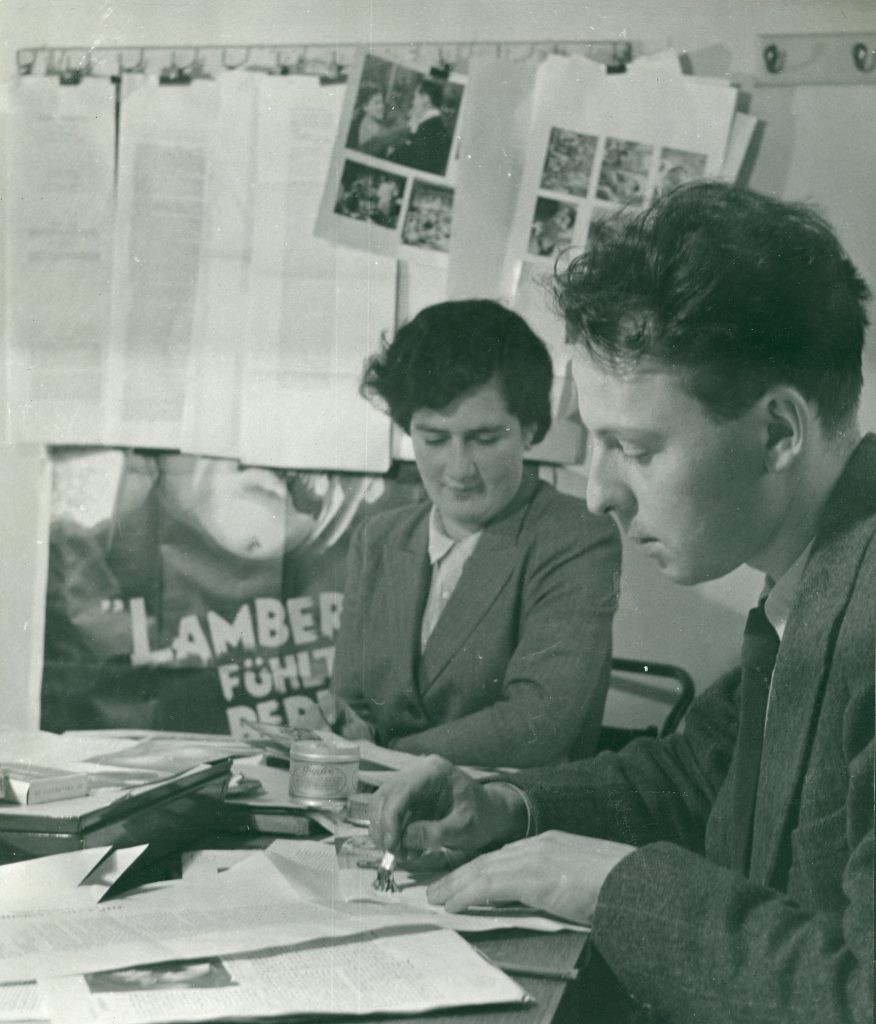The University of Stirling Archives holds the personal and working papers of the film director Lindsay Anderson. A key figure in the history of British cinema his films include This Sporting Life, If…. And O Lucky Man! Before he began making films Anderson edited and contributed to the film magazine Sequence. For a magazine with a small audience and short life span (14 issues between 1946 and 1952) Sequence proved a very influential publication. The magazine took a new approach to writing about film, its contributors adopting a critical approach to contemporary cinema from around the world and focusing on the art of filmmaking. Anderson’s archive includes a set of the magazine and material relating to its production and reception. There are also a number of later files documenting attempts to publish anthologies of Sequence in the 1980s and 1990s. While these efforts proved unsuccessful we are now delighted to make a digitised set of the magazine available online through our new JSTOR Open Community Collections pages.
“SEQUENCE flourished in the late forties and early fifties. It was a forerunner, a British quarterly review of cinema that was determinedly uncompromising, specialist and personal, serious and humorous, enthusiastic and well-informed.”
From Sequence: introduction to a reprint, Lindsay Anderson, 1991 (ref. LA/4/1/18)
The magazine challenged the prevailing uncritical views of British film and championed the work of American directors including John Ford. It featured contributions from young film critics including Gavin Lambert and Penelope Houston (who went on to edit Sight & Sound, the monthly film magazine published by the British Film Institute). In the essays Anderson wrote for the magazine he developed the intellectual basis for how he approached film-making and created the template for the way in which he worked throughout his film career. Richly illustrated, the magazine reported on the new cinema movements emerging in Europe and Hollywood in the post-war period. The magazine also provides an insight into film culture in Britain at the time, with film societies providing a key network for both the screening of new and challenging cinema and the distribution and sale of Sequence.
The impact of the magazine can be seen in a file in the archive which contains a set of letters bearing the iconic letterheads of big Hollywood studios. These letters were written by actors and directors who subscribed to the magazine and appreciated its fresh approach to writing about film.
“Let me tell you how much I enjoy sequence. Its high standard of quality, of criticism, the sincerity of research, are most heartwarming to those of us who do not feel we’re part of an infant industry, but part of an infant art form. Continued good luck.”
Letter from Gene Kelly to Lindsay Anderson, 7 March 1950 (ref. LA/4/1/5/18(


